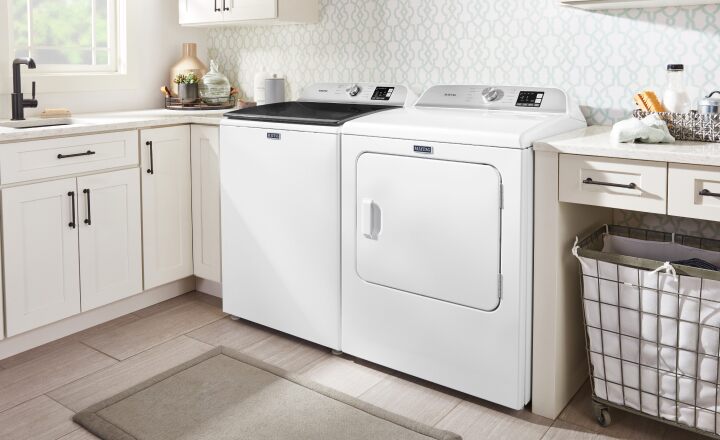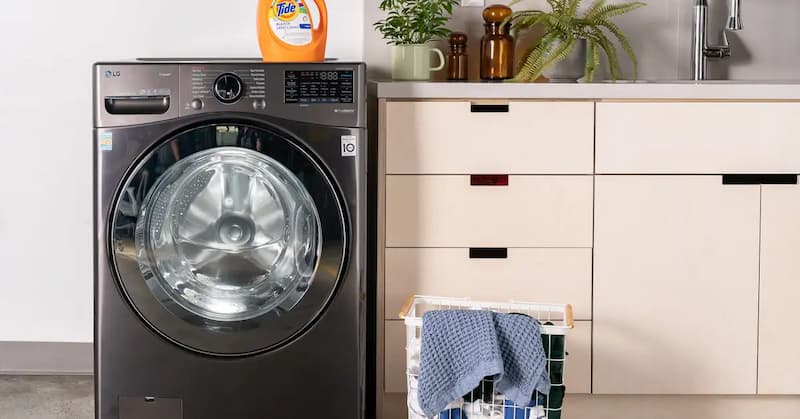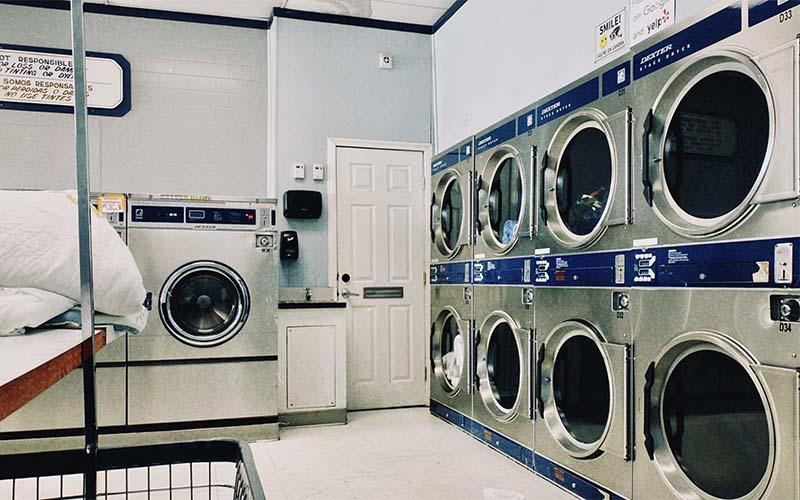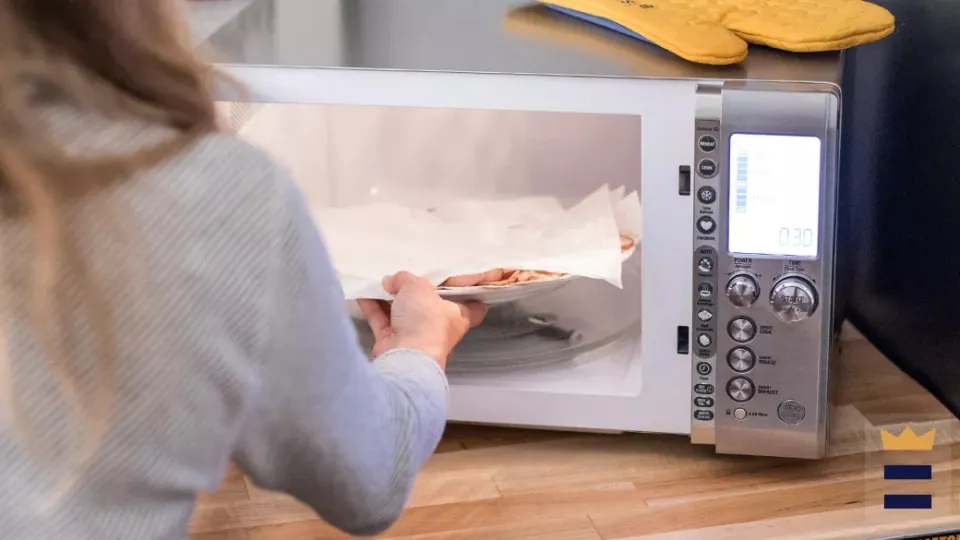Finding your clothes wet after using the dryer is one of the most annoying things you can experience. Is your dryer failing to heat up? So why does my dryer not heating?
Your dryer not heating could be caused by a number of factors:
- A Circuit Breaker Has Been Tripped
- No Gas
- Lint Screen is Dirty
- A Faulty Timer
- Soaking-wet Clothes
- Lack of Power
- Ventilation Blockage
- Lint Buildup Inside the Dryer
- Blown Thermal Fuse
- Load Size is Too Large
- The Thermal Fuse is Blown
- House Vent is Crushed Or Obstructed
- A Broken Heating Element
- Faulty Thermostat Or Thermistor
- Gas Dryers: a Faulty Dryer Flame Sensor
Below are specific causes of the dryer not heating and ways to fix, continue reading.
Dryer Not Heating? Causes and How to Fix?
A Circuit Breaker Has Been Tripped
A tripped circuit breaker is one frequent cause that can be easily checked. Two 120-volt breakers, one for power and the other for heating, are present on an electric dryer. The dryer is running but not heating, which can be attributed to a tripped heating circuit breaker.
- A tripped circuit breaker should be found in your electrical panel.
- Circuit breakers should be reset if necessary.
- Any blown fuses should be replaced.
No Gas
Lack of gas is one of the most straightforward things to check when a gas dryer won’t heat.
- Make certain the gas valve is open.
- Make sure the dryer’s gas pipe is attached.
- Make sure your gas bill has been paid.
Lint Screen is Dirty
The drying time of your appliance may take longer if your lint screen is clogged with lint. After each use, make sure to clean the lint screen. Increased stress on the heating system can result from excessive lint buildup.
Clean off the lint screen
Airflow can be decreased and the heating system’s stress levels increased by a clogged lint screen. The dryer might operate more efficiently if the lint screen is cleaned.
- Find and remove the lint screen by looking in the door opening or the top of the dryer.
- If necessary, open the lint screen, then use your fingers to remove the lint. Push the lint screen back into position and close it.
- After every load, make sure to clean the screen, but avoid rinsing it with water because wet lint is challenging to get out.
Every six months, you ought to give your dryer’s lint trap a thorough cleaning. A nylon brush dampened in hot water and liquid detergent can be used to thoroughly clean it. Clean the lint screen on all sides, then thoroughly rinse it under hot water. Make sure you have completely cleaned the lint screen by checking it. Dry the lint screen completely, then repeat as necessary.

A Faulty Timer
If your dryer has a mechanical timer, a broken timer could be to blame for the dryer not heating. In some models, the heat may continue to run until it gets too hot and trips the thermal fuse if the timer is not moving to the next cycle. Other models’ faulty timers might prevent heat from dissipating.
To check and replace the timer, follow these steps:
- Remove the dryer’s plug from the power source. Turn off the gas if you are using a gas dryer.
- Conduct a continuity test on the tiny timer motor.
- Replace the timer or the timer motor if the continuity test comes back negative.
Soaking-wet Clothes
When you put too-wet clothes in the dryer, a mechanical problem may appear to be the cause of your dryer’s failure to heat up. Very wet clothing generates excess moisture in the drum that is challenging to dry, as opposed to damp clothing.
Put damp clothes in dryer
- Before putting your clothes in the dryer, manually inspect their level of moisture.
- Run a spin or drain and spin cycle in your washer to get rid of the extra water if they are still too wet.
- To remove excess water before putting wet rags, towels, or bathing suits in the dryer, wring them out by hand or run them through the washer’s spin cycle.
Lack of Power
Electric Dryers:A 240-volt supply is necessary to run these dryers. Your dryer won’t be able to power your appliance if it is plugged into an outlet with less than 240 volts. Consult with a licensed electrician if you’re not sure if your wall outlet supports this voltage.
Gas Dryers: These dryers have a valve where they get their gas supply. To open, the handle must be rotated parallel to the gas pipe. While the dryer won’t heat if the valve is closed, the drum will still turn. Details on how to make sure power is getting to your appliance can be found in your owner’s manual.
Check and adjust power supplies
For Electric Dryers:
- Ensure that your wall outlet has a 240-volt power supply or more.
- Before plugging your dryer back in, unplug it, reset both circuit breakers to make sure they haven’t been tripped, and then plug it back in.
For Gas Dryers:
- Visit the dryer’s supply line.
- Once there, make sure the gas valve is in the correct position.
- Turn it parallel to the gas pipe if it is perpendicular to open it.

Ventilation Blockage
Is the inability of your dryer to heat due to a ventilation obstruction? On some models, the lint screens that are connected to the ventilation hose can also become blocked. Check the ventilation hose. If the outside vent is accessible, you can check the ventilation’s functionality by looking for a warm, steady airflow. The issue can be resolved by disconnecting the dryer hose and cleaning this region. Be cautious when moving a gas dryer to gain access if you have one.
- Remove the dryer’s power cord. Turn off the gas if you have a gas dryer.
- Remove the metal tape, unscrew, or unclip the ventilation hose from the dryer before removing it. It might be easier to access this area if the panel covering the ventilation area is removed.
- To clean the space, either invest in a ventilation cleaning kit or use a vacuum attachment.
- In order to allow air to flow through the hose, reattach the hose to the dryer while making sure it is not coiled up.
- Move on to the next cause, which might need access to this area, or replace any panels you removed.
Lint Buildup Inside the Dryer
More lint may be discovered and, depending on the model, more lint traps and/or ventilation areas to clean when unscrewing and/or unclipping dryer panels to gain access to the drum and motor.
- Remove the dryer’s power cord. Turn off the gas if you have a gas dryer.
- Depending on the model, unclip or unscrew the front or back panel to remove it. To locate the screws for these panels on some models, the dryer’s top and/or the control panel must be removed.
- If you need to detach any wires, taking pictures can help you remember where they go. Clean out the lint.
- Either put the dryer back together or move on to the next issue.
Blown Thermal Fuse
A thermal fuse is required in dryers in order to prevent fires. These fuses are a one-time device; when the dryer’s internal temperatures rise too high, they will trip, shutting the dryer off. Before using the dryer, you must replace your thermal fuse if it has tripped.
Contact a professional
If the previous DIY fixes don’t work to restore heat to your dryer, we advise calling a professional because blown thermal fuses necessitate disassembling the device to inspect/replace the fuse itself.
Load Size is Too Large
Space is needed around dryers so that hot air can move throughout the apparatus and the clothes can tumble. Your dryer might malfunction if the load is too big. Drying times will be longer without adequate air flow, which will put extra strain on the heating system.
Check load size
- Check to see if any of your clothing has dried before taking it out of the dryer.
- Make sure the dryer drum is only filled up to about ¾ full.
- Make sure your clothes have enough room to tumble in the front-load dryer if you have one and can watch them dry.
The Thermal Fuse is Blown
The thermal fuse is one of the most frequent reasons for dryers not heating up. The thermal fuse is a safety feature created to keep your dryer from igniting. On more recent models, if the dryer temperature rises above a certain point, the thermal fuse trips and the dryer stops operating. On older models, the dryer might still function but won’t generate any heat.
- Remove the dryer’s electrical connection. Shut off the gas if you have a gas dryer.
- Find the thermal fuse. The thermal fuse is probably found at the back of the dryer if the lint screen is on the top. If your dryer has a front-mounted lint screen, you can probably find it there. By loosening the dryer belt, you might need to remove the dryer drum.
- Check the thermal fuse for continuity using a multimeter.
- A new thermal fuse should be used in place of the old one.
- Either put the dryer back together or move on to the next issue.
To stop the thermal fuse from blowing again, be sure to figure out what went wrong. The cause is frequently a buildup of lint.
House Vent is Crushed Or Obstructed
For your dryer to work properly, there must be adequate airflow. Even though a blocked or crushed vent may not prevent the dryer from heating, it may prevent it from functioning properly.
For the load to dry, steam that is produced as wet clothes tumble in the machine needs to be able to escape the appliance. Dry times could be considerably increased if the steam is not vented. The dryer’s venting must go outside of the house and be free of obstructions.
Remove kinks and obstructions
- Before calling for assistance, inspect your house vent for kinks and obstructions like lint.
- Starting at the dryer’s back and working your way to where it leaves your house, clean the ventas the entire length needed.
A Broken Heating Element
A problem with the heating element is one of the most frequent reasons for a dryer not heating. Natural wear and tear and lint blockages frequently cause damage to the heating element’s coils.
- Remove the dryer’s plug from the power supply. Turn off the gas if you have a gas dryer.
- The heating element should be found. The heating coils and heating element leads are typically enclosed in a metal frame on most models.
- Check the heating element’s continuity using a multimeter. The heating element will need to be replaced if it fails the multimeter test. It will also be proven that the heating element is at fault if you discover any breaks in the coils.
- Take out the broken heating element and install a new one. Take pictures of the wiring so you can recall it later.
- Continue to the next cause if the heating element is not the issue.
Faulty Thermostat Or Thermistor
These are situated close to the heating element on the majority of models.
- Locate the thermostat leads, then check for continuity using a multimeter.
- The thermistor ought to be located next to the thermostat.
- Rerun the thermistor multimeter test.
- If one of these parts fails the multimeter test, the heating issue should be resolved by replacing the offending part.
- To make replacing the part easier, take photos of the part before removing it.
Gas Dryers: a Faulty Dryer Flame Sensor
A malfunctioning flame sensor could be the cause of your gas dryer not heating up. A flame is necessary in a gas dryer to heat the air and dry your clothes. The flame won’t start if the flame sensor is malfunctioning.
To check and replace your flame sensor:
- Search for the flame sensor. In the majority of models, it is a tiny, black box that is fastened to the dryer drum’s exterior just below the flame igniter.
- To measure the resistance, use a multimeter.
- If you discover that the flame sensor is broken, replace it.
Read about
What Can I Do to Keep My Dryer Working Properly?
For the dryer to operate at its best, the lint screen must be cleaned after each use. Additionally, you should clean your lint screen every six months, or more frequently if necessary, using soap, water, and a nylon brush.
If the performance of your dryer has decreased, you should also clean the venting that exits your home every one to two years or more. How often the vent needs to be cleaned may depend on how frequently it is used or the types of items that are dried.
FAQs
Why is My Dryer Running But Not Heating?
The motor and the heater are the two main components found in most clothes dryers. If your dryer is on but won’t heat up to dry your clothes, the heating element is damaged. This might be a mechanical problem with the appliance itself or an electrical problem with the circuit breaker.
Should You Repair Your Old Dryer Or Replace It?
You have two options when a dryer breaks: paying for repairs or investing in a new dryer. Get a general idea of the cost of repairs first. Next, think about how old your dryer is. If you have an old dryer that needs a lot of maintenance, it might be worthwhile to spend the money on a new one. You should replace your dryer if it is more than ten years old.
Why is My Dryer Not Getting Hot Enough to Dry My Clothes?
If your dryer won’t heat up enough, it may be overloaded, have a clogged vent, not close securely (or not be properly sealed), be too small to handle large loads, or have a broken heating element.
Last, But Not Least
Generally, the reasons for your dryer not heating include:
- A Circuit Breaker Has Been Tripped
- No Gas
- Lint Screen is Dirty
- A Faulty Timer
- Soaking-wet Clothes
- Lack of Power
- Ventilation Blockage
- Lint Buildup Inside the Dryer
- Blown Thermal Fuse
- Load Size is Too Large
- The Thermal Fuse is Blown
- House Vent is Crushed Or Obstructed
- A Broken Heating Element
- Faulty Thermostat Or Thermistor
- Gas Dryers: a Faulty Dryer Flame Sensor
You’ll probably need professional diagnostic and repair assistance if you’ve exhausted all of your troubleshooting options and your dryer is still not drying.



